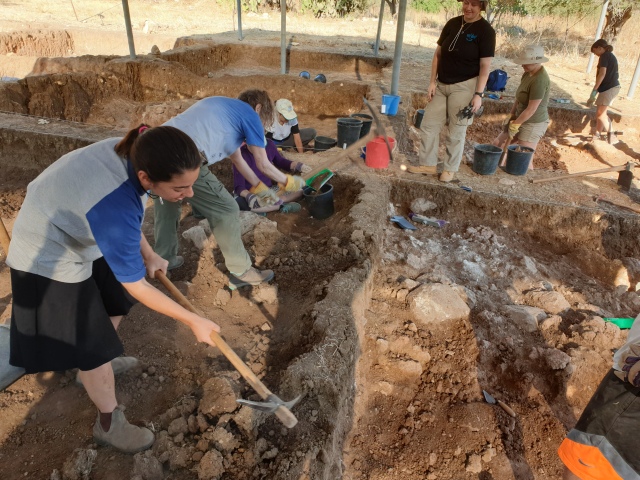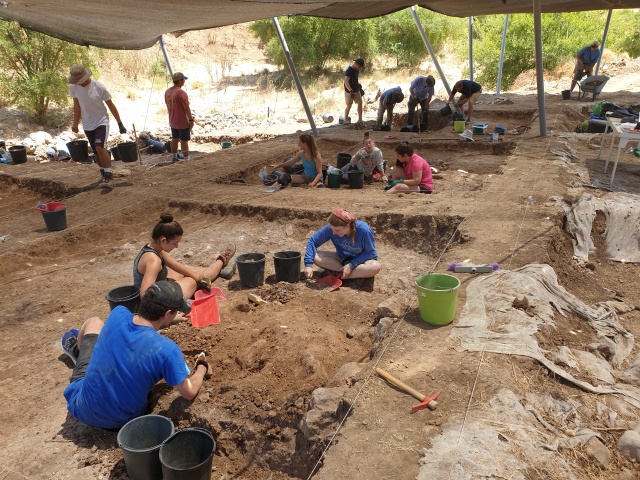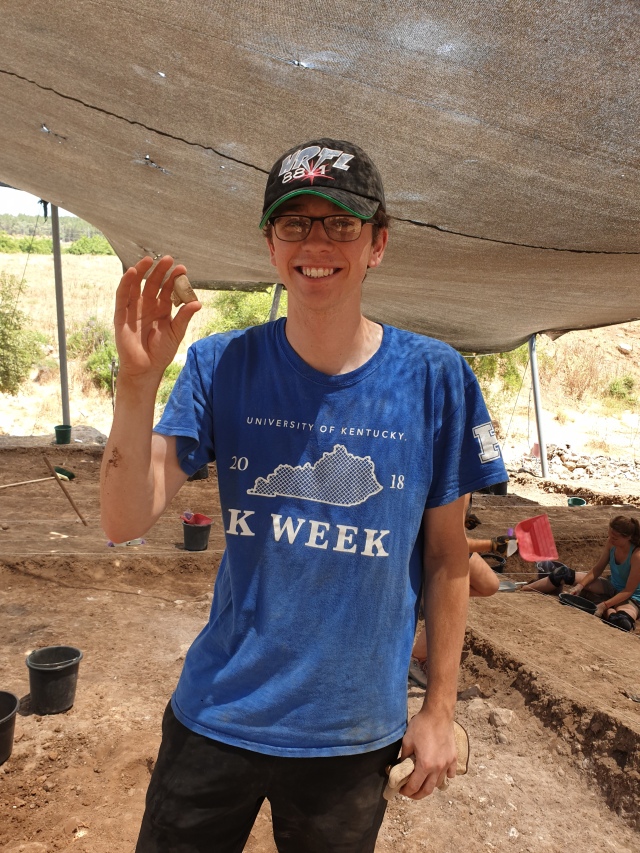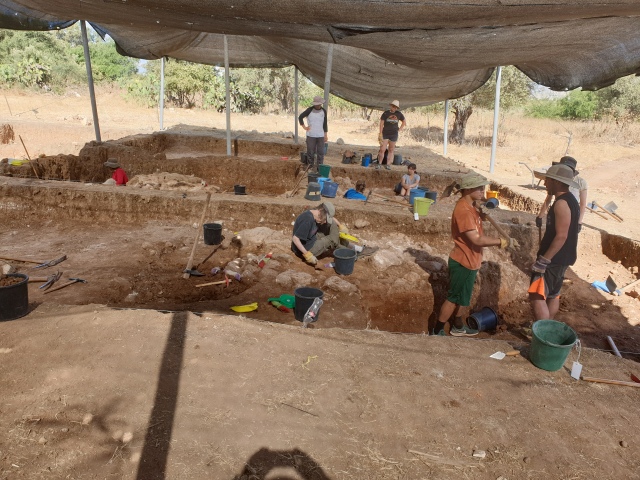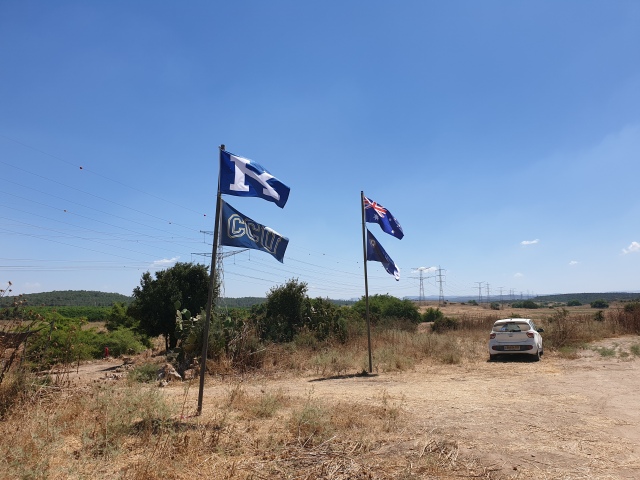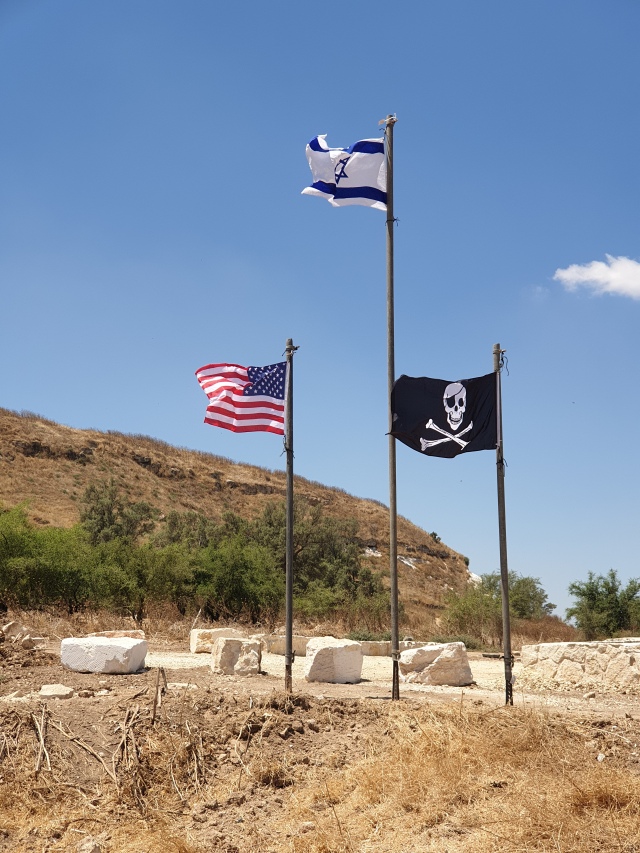Things have been quite busy, so I’ll have to update for the last two days.
All areas are working well and finds are coming out. Yesterday, a large group of students from the annual BIU/YU science program joined us, and contributed very nicely in two of the areas. Here’s a quick review of the main finds:
Area B (formerly Area K2): Brent and his team are working away in the new area. In the southern square, some nice Iron Age architecture and contexts are coming out, although what exactly they are is not clear. In other, more northerly squares, they are digging up against the terrace that we assume is a reuse of the city wall, and so far, we don’t have clear cut answers. Hopefully, this will come out in the coming days.
In Area D, Jeff and his team are working away at the Water Gate area, with some really cool results. In addition to the 2 m high brick walls, one of which is plastered and has a window (!!!!), additional floors, elements and architectural features are popping out. Every day, we understand this complex area a little better. What we know for sure is that this gate looks like nothing we have ever seen before…
In Area K, Eric and his team are digging away, and are reaching clean Iron Age contexts and some architecture in just about all the squares. It’s starting to look like we may have the post-Hazael destruction “squatter phase” – which do far has only been identified in Area D!
In Area M, Maria and her team are deep into the Hazael destruction, and are expanding the area excavated last year. We may have found the road situated to the east of the building, as well as various other rooms and elements. Several more installations that seem to be related to olive oil production have appeared, as well as many, many vessels.
In Area Y, Jill and her team are working hard to try and understand the burnt brick installations and features, the crushed chalk concentrations, and various walls, some made of very large stones, that are found in this area. As in last year’s work, the finds fit in very nicely with the remote sensing results from 2017. That said, we still seem to be quite far away from truly understanding this area. That said, as opposed to last year, this year the Area Y team is finding much larger amount of pottery, once again clearly dating these features to the Iron I.
We also had a few visitors, including Oded Lipschits and David Vanderhooft.
All told great results in all areas. Notice all the various flags flying – representing various groups and nationalities on the dig!
Here are some pictures:




